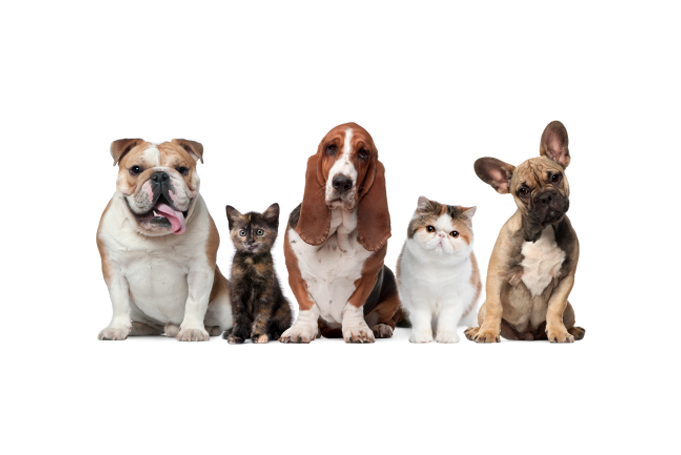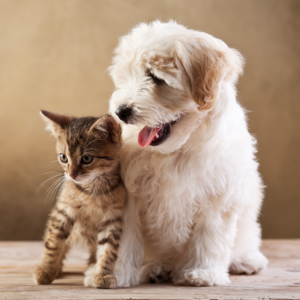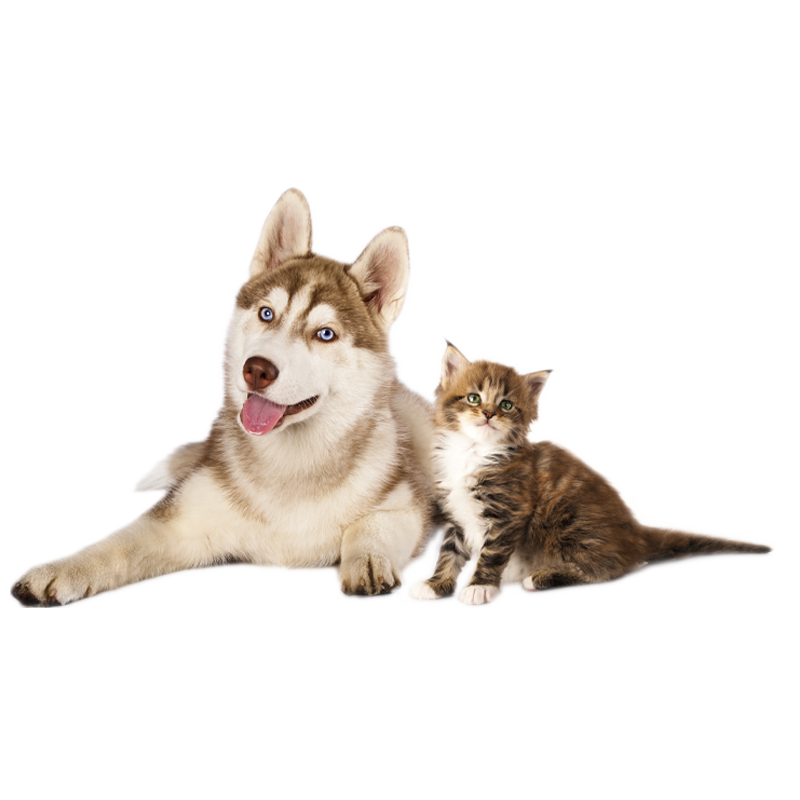Diabetes Mellitus is a disease where the blood sugar levels become very high as a result of poor regulation. The blood sugar or blood glucose is controlled by the insulin which is a hormone produced by the pancreas. If the pancreas produces insufficient amount of insulin or the insulin function is impaired diabetes will develop.
Obesity is a well-known risk factor for developing diabetes. Diabetes is often seen in adult and senior dogs and cats. Certain breeds of dogs have higher risk for diabetes like Australian terriers, Beagles, Samoyeds, Keeshond, Miniature Schnauzers and Miniature Poodles and Cairn Terriers. Diabetes is seen more often in male cats and female dogs.
The first signs of diabetes can be easily overlooked. Those include changes in energy level, appetite and a poor hair coat. Later the signs of illness become more apparent and increased thirst, urination and weight loss despite ravenous appetite usually attract the owner’s attention.
Diabetes is diagnosed after careful physical exam and running a blood and urine tests. The presence of high blood glucose levels in the blood and urine confirms the diagnosis of Diabetes. Additional test that are usually run while monitoring the response to treatment is called Fructosamine. This test traces the blood sugar levels of your pet over the last 14 days prior to the blood sample collection and helps determine if the current treatment is satisfactory or not.
Patients with diabetes are usually treated with insulin and a special diet. Oral diabetes medications are also available, but most of the time they are not effective. Insulin is given twice a day most of the time and a frequent blood tests are needed initially until glucose levels are regulated. Once the appropriate dose and type of insulin is determined the pet will need to be reevaluated every 3 to 6 months to make sure the blood glucose is well regulated. It is not unusual to have to adjust the insulin dose along the course of treatment especially for the cats.
You may need to monitor the blood sugar levels at home for the first few weeks does removing the stress from coming to the hospital. The stress is known to cause elevation of the blood glucose levels in cats. The home monitoring is done every few hours over a period of 12 to 24 hours and is known as a glucose curve. Your veterinarian will instruct you on how often and for how long you will have to check and record the blood sugar levels. If you are unable to do that at home no need to worry. This will be done at the animal hospital.
The biggest concern most pet owners have is how to give the insulin injections. Your veterinarian will show you how to do it and don’t get discouraged if it seems too complicated initially. Most people and pets get used to it really fast.
It is very important to store the insulin appropriately, usually refrigerated and to use the dose recommended by your veterinarian. Insulin injections have to be given every 12 hours with a meal. If your pet is not eating do not give the insulin injection and contact your veterinarian for advice. High dose of insulin or insulin given without food may cause the sugar levels to drop significantly leading to lethargy, tremors, sometimes coma and even death. If you notice any of those signs quickly give some corn syrup or honey to your pet. If the pet is unable to swallow rub some on the gums and take him to the hospital immediately.
On a brighter note be aware that in some cats a remission is possible. In that case you will be happy to know that no further insulin treatments will be needed.
Diabetes Mellitus is a disease where the blood sugar levels become very high as a result of poor regulation. The blood sugar or blood glucose is controlled by the insulin which is a hormone produced by the pancreas. If the pancreas produces insufficient amount of insulin or the insulin function is impaired diabetes will develop.
Obesity is a well-known risk factor for developing diabetes. Diabetes is often seen in adult and senior dogs and cats. Certain breeds of dogs have higher risk for diabetes like Australian terriers, Beagles, Samoyeds, Keeshond, Miniature Schnauzers and Miniature Poodles and Cairn Terriers. Diabetes is seen more often in male cats and female dogs.
The first signs of diabetes can be easily overlooked. Those include changes in energy level, appetite and a poor hair coat. Later the signs of illness become more apparent and increased thirst, urination and weight loss despite ravenous appetite usually attract the owner’s attention.
Diabetes is diagnosed after careful physical exam and running a blood and urine tests. The presence of high blood glucose levels in the blood and urine confirms the diagnosis of Diabetes. Additional test that are usually run while monitoring the response to treatment is called Fructosamine. This test traces the blood sugar levels of your pet over the last 14 days prior to the blood sample collection and helps determine if the current treatment is satisfactory or not.
Patients with diabetes are usually treated with insulin and a special diet. Oral diabetes medications are also available, but most of the time they are not effective. Insulin is given twice a day most of the time and a frequent blood tests are needed initially until glucose levels are regulated. Once the appropriate dose and type of insulin is determined the pet will need to be reevaluated every 3 to 6 months to make sure the blood glucose is well regulated. It is not unusual to have to adjust the insulin dose along the course of treatment especially for the cats.
You may need to monitor the blood sugar levels at home for the first few weeks does removing the stress from coming to the hospital. The stress is known to cause elevation of the blood glucose levels in cats. The home monitoring is done every few hours over a period of 12 to 24 hours and is known as a glucose curve. Your veterinarian will instruct you on how often and for how long you will have to check and record the blood sugar levels. If you are unable to do that at home no need to worry. This will be done at the animal hospital.
The biggest concern most pet owners have is how to give the insulin injections. Your veterinarian will show you how to do it and don’t get discouraged if it seems too complicated initially. Most people and pets get used to it really fast.
It is very important to store the insulin appropriately, usually refrigerated and to use the dose recommended by your veterinarian. Insulin injections have to be given every 12 hours with a meal. If your pet is not eating do not give the insulin injection and contact your veterinarian for advice. High dose of insulin or insulin given without food may cause the sugar levels to drop significantly leading to lethargy, tremors, sometimes coma and even death. If you notice any of those signs quickly give some corn syrup or honey to your pet. If the pet is unable to swallow rub some on the gums and take him to the hospital immediately.
On a brighter note be aware that in some cats a remission is possible. In that case you will be happy to know that no further insulin treatments will be needed.




